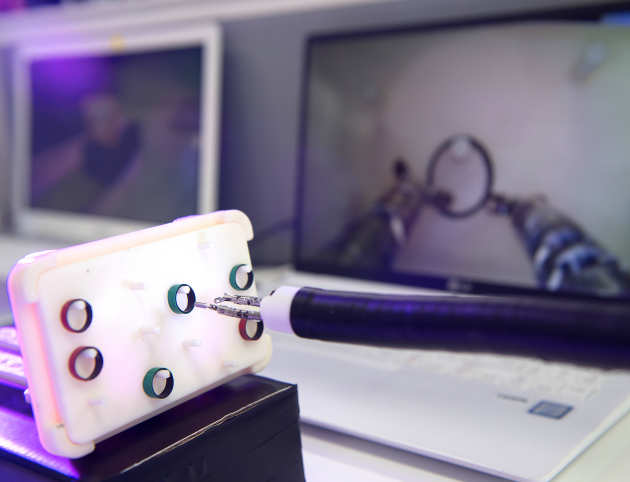About the Facility
 In 2013, the Chancellor of the Exchequer announced additional capital funding for the eight great technologies in the prebudget statement, allowing the EPSRC to strengthen the research capability of UK universities by supporting requests for capital equipment. Subsequently, it called for bids in three focussed areas of the Eight Great Technologies: Advanced Materials, Grid-scale Energy Storage and Robotics & Autonomous Systems
In 2013, the Chancellor of the Exchequer announced additional capital funding for the eight great technologies in the prebudget statement, allowing the EPSRC to strengthen the research capability of UK universities by supporting requests for capital equipment. Subsequently, it called for bids in three focussed areas of the Eight Great Technologies: Advanced Materials, Grid-scale Energy Storage and Robotics & Autonomous Systems
 As an enabling technology, robotics and autonomous systems will have a direct impact across multiple sectors. Already in use, examples can be found in the manufacturing, life sciences and defence sectors. There is also the potential for significant new applications in transport, energy and the environment. There is a critical need to ensure that the UK maintains its world leading capability across the science, engineering and ICT aspects that underpin robotics and autonomous systems. Medical robots, whether to be used for minimally invasive surgery (MIS), targeted therapy, emergency response, prosthetics or home assistance, represent one of the fastest growing sectors in medical devices industry. Early development of medical robotics benefitted significantly from adaptation of industrial platforms, laying down the foundation for its initial clinical acceptance and future growth.
As an enabling technology, robotics and autonomous systems will have a direct impact across multiple sectors. Already in use, examples can be found in the manufacturing, life sciences and defence sectors. There is also the potential for significant new applications in transport, energy and the environment. There is a critical need to ensure that the UK maintains its world leading capability across the science, engineering and ICT aspects that underpin robotics and autonomous systems. Medical robots, whether to be used for minimally invasive surgery (MIS), targeted therapy, emergency response, prosthetics or home assistance, represent one of the fastest growing sectors in medical devices industry. Early development of medical robotics benefitted significantly from adaptation of industrial platforms, laying down the foundation for its initial clinical acceptance and future growth.
With recent emphasis clinically on improved surveillance and earlier diagnosis, an increasing proportion of procedures performed will aim to target smaller lesions that are more amenable to minimally invasive procedures. This has called for the development of miniaturised robots for surgery, and targeted therapy with micro-instruments and smart actuators with integrated sensing and imaging, supported by advances in materials, micro-fabrication and micro-machining, as well as rapid prototyping technologies. These robots are expected to have a significant impact on the future practice of minimally invasive procedures including gastrointestinal, urological, neuro, cardiac, endovascular, paediatric, and orthopaedic surgeries.
The purpose of this facility is to establish dedicated micro-engineering facilities for medical robotics at Imperial, focusing on:
- Multi-material, precision 3D rapid prototyping with materials ranging from thermoplastics, photopolymers, to metal with direct metal laser sintering;
- Micro-machining and fabrication equipment including micro-lathe, laser profiling and fabrication platforms;
- Micro-assembly platforms with associated microscopes and 3D imaging systems;
- Fibre-optics and ablation laser required for robotically assisted in-vivo cellular-level optical imaging, tissue characterisation and ablation.


